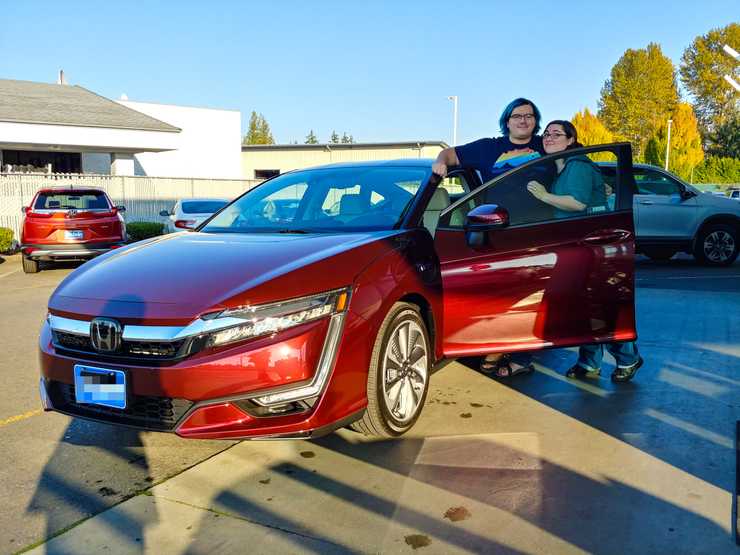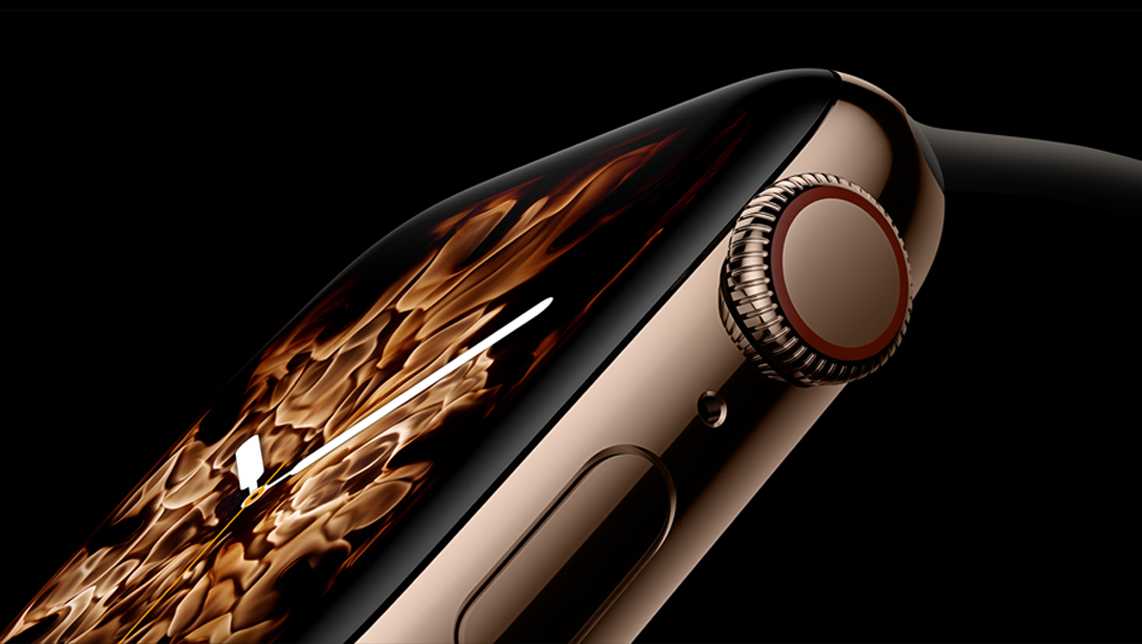
Yesterday Abby and I picked up this beaut, the 2018 Honda Clarity Touring-class in crimson red. It’s a plug-in hybrid electric vehicle (PHEV), which means it can run on traditional gasoline as well as on electrical power. But where most hybrids only get energy from the engine and the kinetic energy of the car itself, this can be plugged into the wall and charged directly from the electrical grid. Many owner reports have said that it’s very common to use only electric power when driving without the gas engine kicking on at all, which has been true for us so far. And where we live, our energy utility gets most of its power from green sources like nuclear 1 and hydroelectric power, which makes it pretty clean to drive when the gas engine is off.
So why go with a plug-in hybrid, rather than go all in on electric? Primarily because of the limitations of electric, both in infrastructure and in speed. We go on a fair number of road trips, and while electric charging stations are becoming more ubiquitous every day, it is still far from perfect. Gas stations are ubiquitous even in the most secluded places. But crucially, a gas tank can be filled in minutes, vs the hour that even the fastest Tesla Supercharger can recharge a battery. That’s a big delay in a trip, and it assumes that there will be a Supercharger where you need one. (Interestingly, there is a Clarity model that is available with hydrogen fuel cell technology, which has many of the environmental benefits of EVs with the filling time of gas tanks, but those are exceptionally hard to find outside of California, which is the only place in the US you can get one.) As we’re only a one-car home, having a single car that is optimized for pure electric driving day-to-day plus a gas engine for 10+ hour road trips was a perfect fit for our needs.
This car is a delight to drive, with an emphasis on comfort of the driver and the passengers. The interior is spacious and open, with huge windows and pretty small pillars. The back seat has plenty of room to fit 3 adults, even with the seats all the way back, and even has some handy phone pockets in the seats. At over 4,000 pounds empty, it’s heavy and has a low center gravity that makes it really grip the road well, holding you in your seat without jostling you about over small bumps. While it’s not supposed to be a sports car, it has a little kick to it when you really hit the gas accelerator. And it’s remarkably quiet and free of engine and air noise, even on the highways.
Technology wise, this isn’t the most sophisticated car for a gadget guy like me, but it does have plenty of toys. The gauges cluster is all screens, but even on a super sunny afternoon, there was no problems with visibility. The center console entertainment center is definitely a little slow and light on functionality, but you can fix that by plugging in your phone and using Android Auto or CarPlay. It has a back-up camera and a blind spot camera on the right side, but not one on the left or in the front, both of which I would’ve upgraded for if they were available.
But the tech in this car holds some smart driving features that I am loving beyond anything else. The first one is a simple thing called Brake Hold. When it’s on, if you come to a stop at an intersection, it holds the brake in place until you accelerate again, so you can take your foot off the brake pedal. Small thing, but it can really reduce driving fatigue (especially when you use the regenerative braking to slow before intersections). The second is lane-keeping assistance, which will automatically keep you in your lane on highways, even around some curvy stretches. The third is adaptive cruise control, which lets you set a target speed and distance you want to keep behind the car in front of you, slowing all the way to a complete stop. When we were driving home from the dealership in rush hour traffic, the car was doing literally all the work of managing stop-and-go traffic with people merging in front of you. It was delightful, and made the usually-stressful experience of traffic jams almost relaxing.
This car has been great so far, and I’m looking forward to pushing it further. If you’re a one-car house and need both electric performance plus road trip capacity without having to stress about electric infrastructure or hours-long charging, a plug-in hybrid is a pretty great choice. The Clarity is probably the best implementation of PHEV on the road today, and you should consider checking it out.





